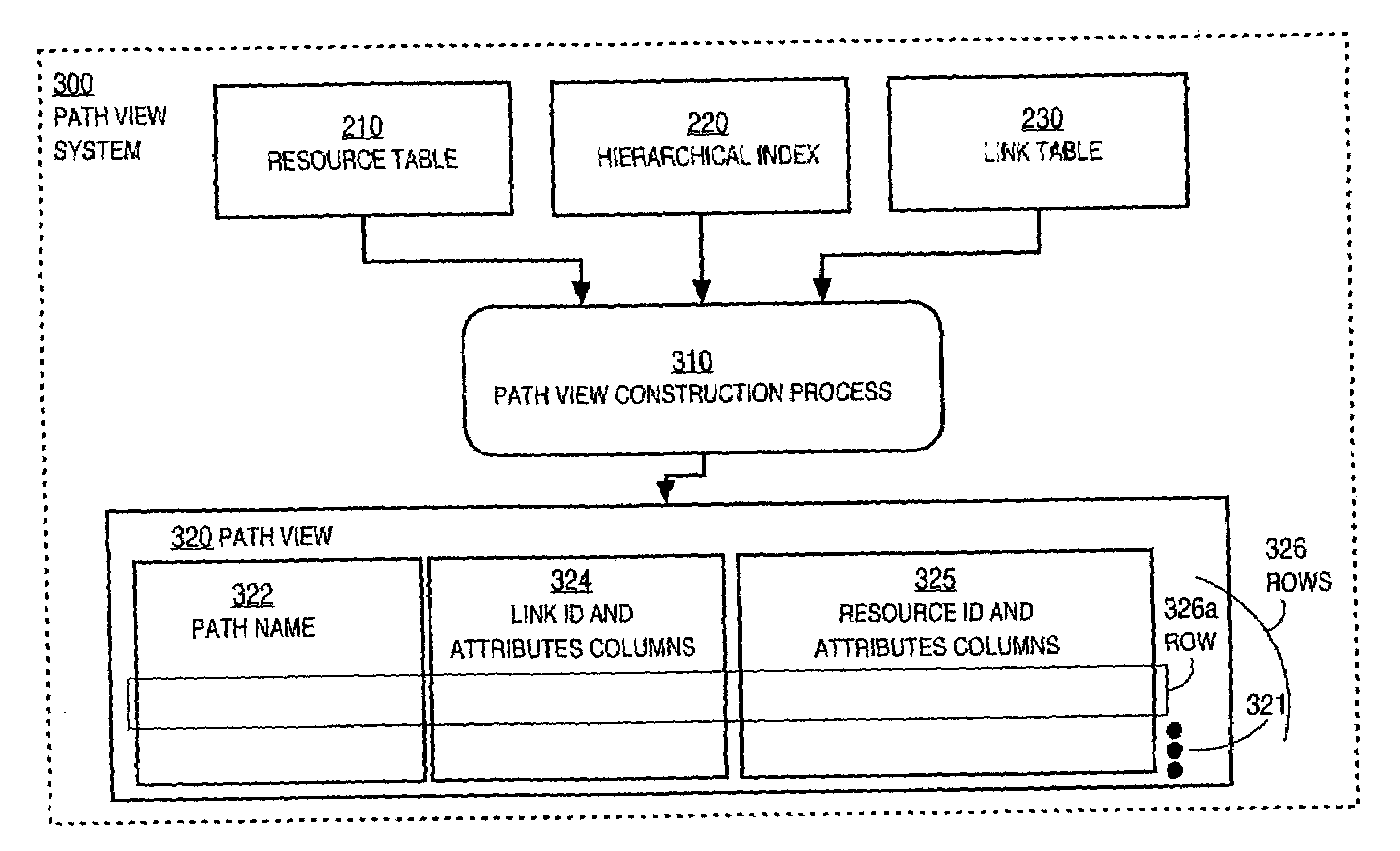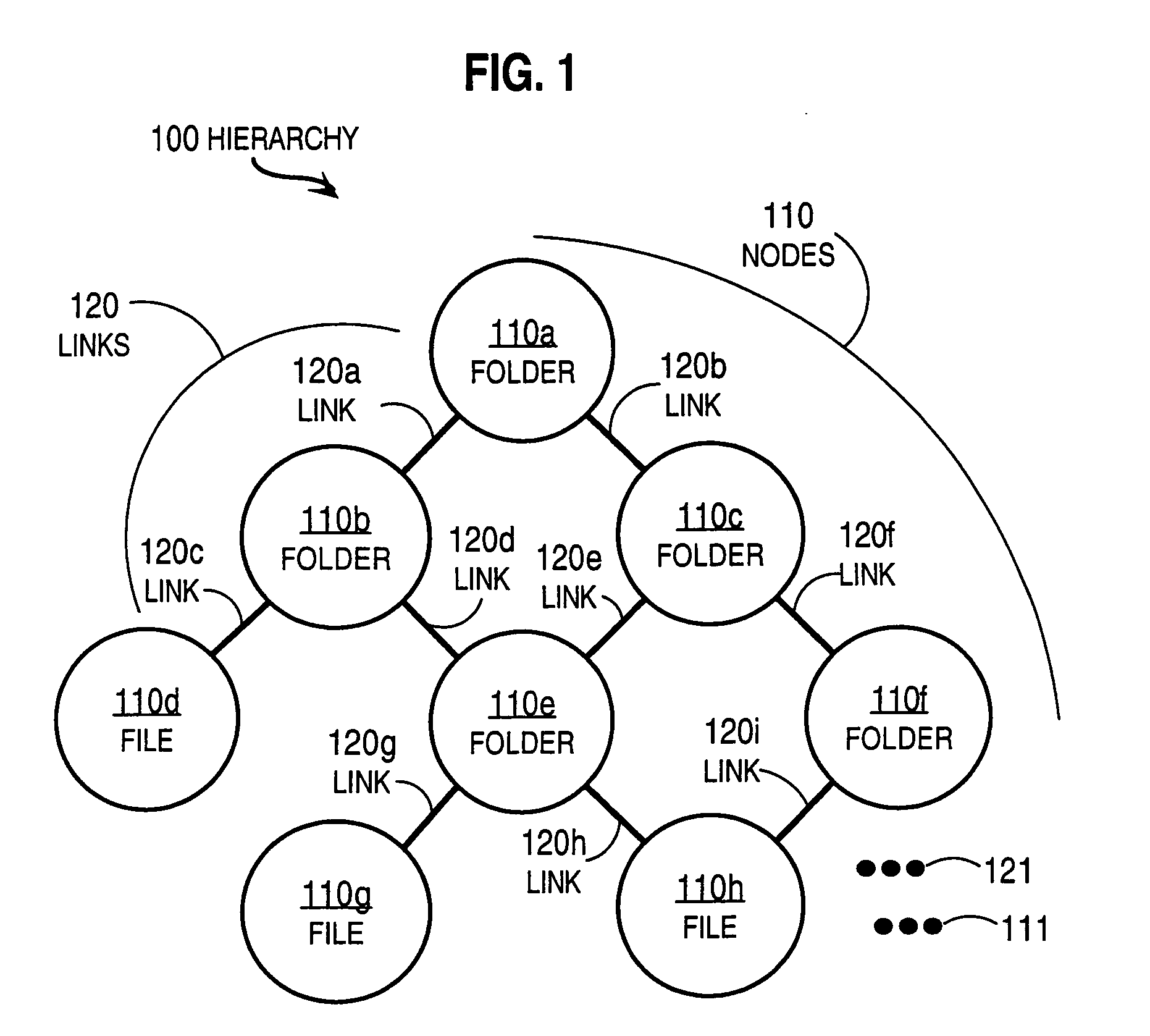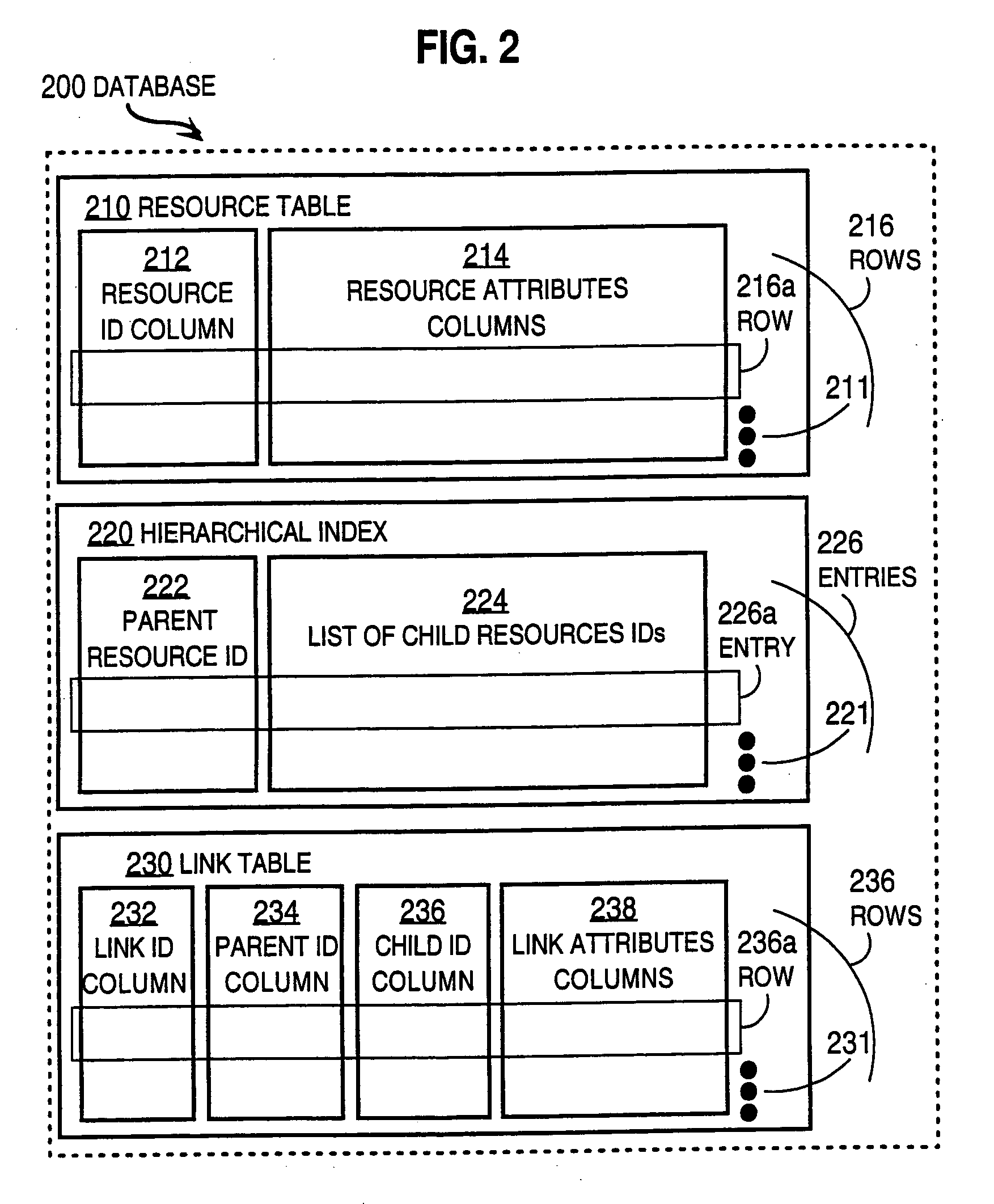Techniques for managing hierarchical data with link attributes in a relational database
a technology of relational database and hierarchical data, applied in relational database, data processing applications, instruments, etc., can solve problems such as difficult to express search results on data organized by hierarchies, such as file systems and xml documents, and cannot be readily determined in hierarchies with cycles
- Summary
- Abstract
- Description
- Claims
- Application Information
AI Technical Summary
Problems solved by technology
Method used
Image
Examples
example hierarchical
[0028]FIG. 1 is a block diagram that illustrates a hierarchy 100 of nodes and links in a file system, according to an embodiment. The hierarchy 100 includes multiple nodes 110 that each corresponds to a folder or a file in the file system. Nodes 110a, 110b, 110c, 110e, 110f, correspond to folders in the file system and are parent nodes to one or more other nodes; and nodes 110d, 110g, 110h correspond to files in the file system, which are always leaf nodes that are not parents to any other nodes. The term “resource” is used hereinafter to refer to an item that may be either a folder or a file; thus all nodes 110 correspond to resources. Ellipsis 111 indicates other nodes 110 in the hierarchy 100 that correspond to other resources in the file system.
[0029]Each node 110 has one or more attributes that correspond to properties of the corresponding resource. For example, node attributes may correspond to one or more of a resource name, a resource type (indicating whether file...
PUM
 Login to View More
Login to View More Abstract
Description
Claims
Application Information
 Login to View More
Login to View More - R&D
- Intellectual Property
- Life Sciences
- Materials
- Tech Scout
- Unparalleled Data Quality
- Higher Quality Content
- 60% Fewer Hallucinations
Browse by: Latest US Patents, China's latest patents, Technical Efficacy Thesaurus, Application Domain, Technology Topic, Popular Technical Reports.
© 2025 PatSnap. All rights reserved.Legal|Privacy policy|Modern Slavery Act Transparency Statement|Sitemap|About US| Contact US: help@patsnap.com



